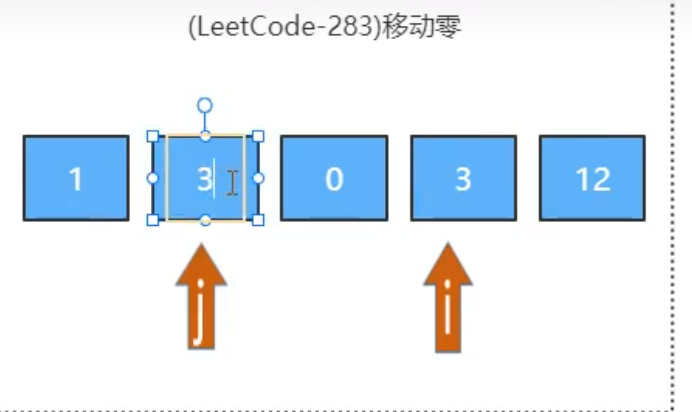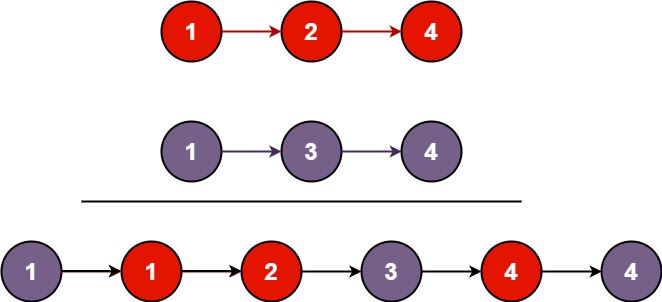1-力扣刷题笔记
2023-02-25
0
Word Count: 1.2k(words)
Read Count: 5(minutes)
力扣刷题 一、数组 ①双指针 1.移动0 1 2 3 4 5 6 7 8 9 10 11 12 13 14 15 16 17 18 给定一个数组 nums,编写一个函数将所有 0 移动到数组的末尾,同时保持非零元素的相对顺序。 请注意 ,必须在不复制数组的情况下原地对数组进行操作。 示例 1: 输入: nums = [0,1,0,3,12] 输出: [1,3,12,0,0] 示例 2: 输入: nums = [0] 输出: [0] 来源:力扣(LeetCode) 链接:https://leetcode.cn/problems/move-zeroes 著作权归领扣网络所有。商业转载请联系官方授权,非商业转载请注明出处。
解法:
1 2 3 4 5 6 7 8 9 10 11 12 13 14 15 16 17 18 class Solution { public void moveZeroes (int [] nums) { if (nums==null ) return ; int index1=0 ,index2=0 ; for (;index1<nums.length;index1++){ if (nums[index1]!=0 ){ nums[index2++]=nums[index1]; } } for (;index2< nums.length;index2++){ nums[index2]=0 ; } } }
解析;
//使用双指针法,index1 ,index2 同时指向开头
原始
4 3 2 7 8 2 3 1
0 1 2 3 4 5 6 7
第一次执行
int x=(4-1)%8=3;
num[3]=7+8=15;
4 3 2 15 8 2 3 1
0 1 2 3 4 5 6 7
第二次执行
int x=(3-1)%8=2;
num[2]=2+8=10;
4 3 10 15 8 2 3 1
0 1 2 3 4 5 6 7
第三次执行
int x=(10-1)%8=1;
num[1]=4+8=12
4 12 10 15 8 2 3 1
0 1 2 3 4 5 6 7
第四次执行
int x=(15-1)%8=6;
num[6]=3+8=11;
4 9 18 11 8 2 11 1
0 1 2 3 4 5 6 7
第五次执行
int x=(8-1)%8=7;
num[7]=1+8=9;
4 9 18 11 8 2 11 9
0 1 2 3 4 5 6 7
第六次执行
int x=(2-1)%8=1;
num[1]=9+8=17;
4 17 18 11 8 2 11 9
0 1 2 3 4 5 6 7
第七次执行
int x=(3-1)%8=2;
num[2]=18+8=26;
4 17 26 11 8 2 11 9
0 1 2 3 4 5 6 7
第八次执行
int x=(9-1)%8=0;
num[0]=4+8=12;
12 17 26 11 8 2 11 9
0 1 2 3 4 5 6 7
4+8=12
11%8=3
2.查找消失的数字(448) 给你一个含 n 个整数的数组 nums ,其中 nums[i] 在区间 [1, n] 内。请你找出所有在 [1, n] 范围内但没有出现在 nums 中的数字,并以数组的形式返回结果。
示例 1:
输入:nums = [4,3,2,7,8,2,3,1]
示例 2:
输入:nums = [1,1]
1 2 3 4 5 6 7 8 9 10 11 12 13 14 15 16 17 18 19 20 21 22 public List<Integer> findDisappearedNumbers (int [] nums) { int n=nums.length; List<Integer> integers = new ArrayList <>(); for (int num:nums){ int x=(num-1 )%n; nums[x]+=n; } for (int i=0 ;i<n;i++){ if (nums[i]<=n){ integers.add(i+1 ); } } return integers; }
二、链表 1.合并两个有序列表(21) 将两个升序链表合并为一个新的 升序 链表并返回。新链表是通过拼接给定的两个链表的所有节点组成的。
示例 1:
输入:l1 = [1,2,4], l2 = [1,3,4]
链表的合并与数组类似,都可以使用双指针方法进行快速的排序。
1 2 3 4 5 6 7 8 9 10 11 12 13 14 15 16 17 18 19 20 21 22 23 24 25 public ListNode mergeTwoLists (ListNode list1, ListNode list2) { if (list1==null ) return list2; if (list2==null ) return list1; ListNode resultNode = new ListNode (0 ); ListNode p=resultNode; while (list1!=null &&list2!=null ){ if (list1.val>= list2.val){ p.next=list2; list2=list2.next; }else { p.next=list1; list1=list1.next; } p=p.next; } if (list1!=null ) p.next=list1; if (list2!=null ) p.next=list2; return resultNode.next; }




